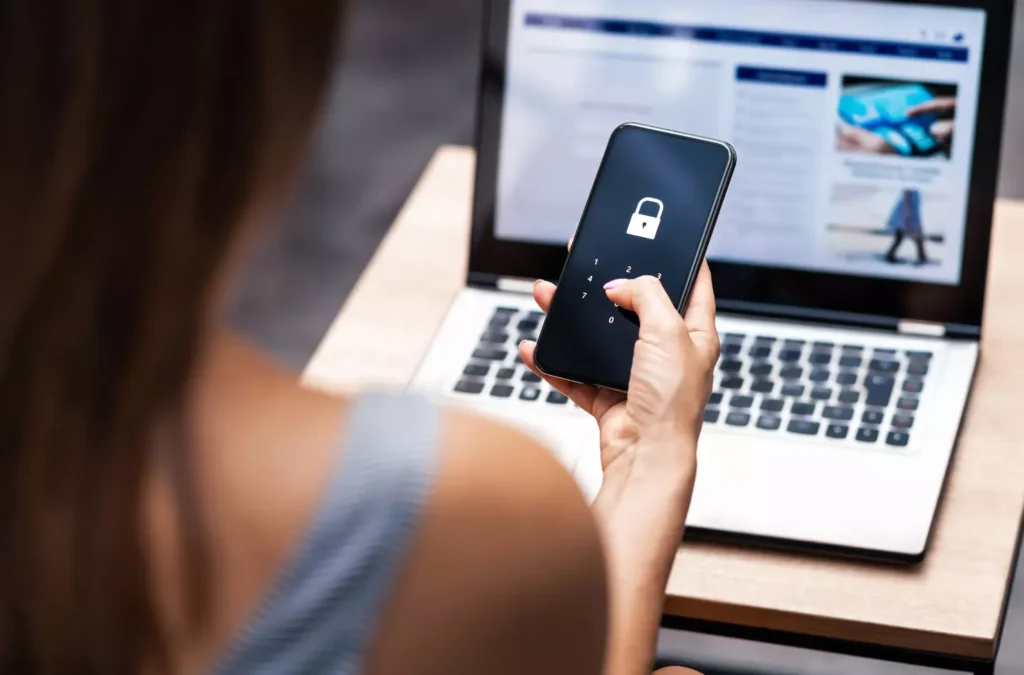In the wake of a rapidly evolving digital landscape, one issue that continues to dominate headlines is cybersecurity. As cybercriminals become more sophisticated, governments, businesses, and individuals are searching for robust digital shields to guard their data. Among the top defenses standing out today are encrypted apps amid cyberattack threats.
From personal messaging to enterprise communication, encrypted applications have become a necessity rather than a luxury. With a global increase in data breaches, ransomware, and state-sponsored cyber espionage, the value of encrypted platforms has skyrocketed. But what exactly makes these apps so crucial in today’s environment? Let’s explore.
The Rising Tide of Cyberattacks
In recent years, cyberattacks have surged in frequency, scale, and severity. According to a 2024 report by Cybersecurity Ventures, cybercrime is expected to inflict damages totaling $10.5 trillion annually by 2025. Threats range from phishing and malware to sophisticated zero-day exploits and nation-state cyber operations.
Industries such as healthcare, finance, energy, and government have become primary targets. Personal information, intellectual property, and even national security secrets are at risk. The 2023 ransomware attack on a major U.S. hospital chain, which led to critical services being halted, is a haunting reminder of the potential real-world consequences.
This alarming scenario has pushed digital users toward technologies that promise security, privacy, and resilience—leading to the surge in demand for encrypted applications.
What Are Encrypted Apps?
Encrypted apps are software tools that use end-to-end encryption (E2EE) to secure communication. This means only the sender and receiver can access the message contents—no third party, not even the app provider, can read the data.
These apps apply complex cryptographic algorithms to scramble data, making it nearly impossible for unauthorized entities to decipher the content without the appropriate decryption key. This is fundamentally different from traditional apps, where messages or data can be intercepted during transmission or stored unprotected on servers.
Popular encrypted apps include:
- Signal – An open-source messaging platform known for its transparency and robust encryption.
- Telegram (Secret Chats) – Offers E2EE for specific chats.
- WhatsApp – Provides E2EE for messages, calls, and media.
- ProtonMail – An encrypted email service based in Switzerland.
- Tresorit – A cloud storage service that uses end-to-end encryption.

Why Encrypted Apps Matter in the Era of Cyberattacks
1. Protecting Privacy and Confidentiality
The fundamental appeal of encrypted apps lies in their ability to preserve user privacy. In a world where data is currency, encrypted platforms act like digital vaults. Whether you’re sharing medical records, financial information, or personal conversations, these apps ensure that your data remains private.
During a cyberattack, attackers often aim to intercept communication or exfiltrate sensitive information. With end-to-end encryption in place, even if communication channels are breached, the stolen data would be meaningless gibberish to hackers without the encryption keys.
2. Safeguarding Intellectual Property
Businesses often share proprietary information via digital channels—product designs, trade secrets, and business strategies. In 2024, a major European automotive company avoided a catastrophic leak of design documents due to their encrypted collaboration platform. The attackers breached their email servers but couldn’t access the encrypted attachments.
This real-world example highlights how encrypted apps amid cyberattack scenarios can act as a safety net, preventing irreversible damage.
3. Resisting Government Surveillance and Censorship
Encrypted apps are also tools of empowerment for individuals living under authoritarian regimes. Journalists, activists, and whistleblowers often rely on these platforms to communicate safely. Countries with heavy internet censorship have witnessed spikes in encrypted app downloads during periods of political unrest.
Signal and Telegram, for instance, have seen exponential growth in countries with poor digital freedoms. Their encryption ensures that even powerful surveillance apparatuses struggle to monitor private conversations.
Challenges and Limitations of Encrypted Apps
While the benefits are numerous, it’s important to acknowledge the challenges associated with encrypted applications.
1. Complexity and Usability
Not all encrypted apps are user-friendly. For the average person, understanding cryptographic terms and managing private keys can be daunting. Apps must strike a balance between robust encryption and a smooth user experience to achieve mass adoption.
2. False Sense of Security
Some apps market themselves as “secure” while offering substandard or partial encryption. For instance, some services only encrypt data in transit, not at rest, or apply E2EE only to specific functions (like voice calls but not messages). Users may falsely assume comprehensive protection when vulnerabilities still exist.
3. Criminal Exploitation
One controversial aspect of encrypted apps is their appeal to criminals. Encrypted platforms have reportedly been used for illegal activities, from drug trafficking to terrorism coordination. This has sparked global debates around encryption backdoors—where governments want access to encrypted data in the interest of national security.
However, most cybersecurity experts warn that introducing such backdoors compromises the integrity of encryption for all users, not just criminals.
The Role of Encrypted Apps Amid Cyberattack: Use Cases
Healthcare Sector
During the 2021 COVID-19 pandemic, healthcare institutions were increasingly targeted by ransomware. Secure apps like ProtonMail and Tresorit helped healthcare providers share patient data and research findings securely. In cyberattack scenarios, these encrypted platforms maintained HIPAA compliance and ensured uninterrupted communication.
Government and Diplomacy
Encrypted communication has become standard in diplomatic and defense circles. Governments use customized encrypted messaging platforms to prevent espionage. For instance, France and Germany have developed in-house encrypted apps specifically for government use.
Small Businesses and Startups
Many small and medium-sized enterprises (SMEs) lack the budget for high-end cybersecurity infrastructure. Using encrypted apps offers them a low-cost solution for secure communication and file sharing, especially when dealing with clients or remote teams.
Journalists and Human Rights Activists
Encrypted apps are lifelines for journalists working in conflict zones or under repressive governments. Secure platforms allow them to coordinate, share evidence, and publish reports without fear of interception or retaliation.
Best Practices for Using Encrypted Apps
Even the most secure app can become vulnerable if used carelessly. Here are some best practices:
- Enable Two-Factor Authentication (2FA): Adds an extra layer of protection.
- Verify Contacts: Most encrypted apps let users verify identities through safety numbers or QR codes.
- Keep Apps Updated: Developers regularly patch vulnerabilities; always use the latest version.
- Avoid Unofficial Versions: Download apps only from trusted sources like the App Store or Google Play.
- Understand Encryption Scope: Know what parts of your communication are encrypted and what aren’t.
How to Choose the Right Encrypted App
Not all encrypted apps are created equal. When selecting one, consider:
- Transparency: Is the source code open for review?
- Encryption Protocols: Does it use modern, peer-reviewed encryption methods like Signal Protocol?
- Metadata Protection: Does the app also protect metadata (who you talk to, when, and for how long)?
- Data Sovereignty: Where are the servers located? What laws govern the data?
- Third-Party Audits: Has the app been independently audited for security?
Future of Encrypted Apps Amid Cyberattack Trends
The cybersecurity landscape is continuously shifting, and so is the technology surrounding encrypted apps. Here’s what the future might hold:
- Quantum-Resistant Encryption: As quantum computing advances, current encryption methods could be cracked. Developers are now working on quantum-resistant algorithms to future-proof encrypted apps.
- AI-Powered Threat Detection: Integration of artificial intelligence to detect abnormal behavior or potential breaches, even within encrypted environments.
- Decentralized Platforms: Apps that don’t rely on central servers, making them more resilient to large-scale attacks or censorship.
As threats become more complex, so too will the countermeasures. The arms race between attackers and defenders is far from over, but encryption will remain at the frontlines.
Conclusion:
The battle for digital security is intensifying. From governments and corporations to everyday users, the urgency to protect data has never been more apparent. In this high-stakes environment, encrypted apps amid cyberattack events have proven themselves as digital fortresses—essential tools in the arsenal of modern cybersecurity.
While no technology is entirely immune to breaches, encrypted apps significantly reduce the attack surface and raise the cost for potential adversaries. They are not a silver bullet but are undeniably one of the most effective shields available today.
As we step further into a world powered by data and driven by connectivity, investing in secure communication is no longer optional—it’s critical. Whether you’re a concerned individual, a cautious entrepreneur, or a responsible government entity, embracing encrypted apps is a smart, proactive move in defending your digital life.



